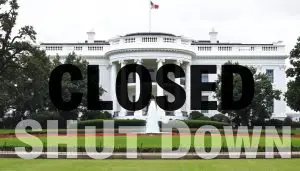Impact on Special Education as Government Shutdown Persists
Explore the ongoing consequences for special education programs as the federal government shutdown continues to unfold.

Impact on Special Education as Government Shutdown Persists
Click to summarize this article.
Impact on Special Education as Government Shutdown Persists: The government shutdown is affecting special education more each day. Furloughs are causing worries about who will help with special education needs. Families are concerned about receiving answers and maintaining services.
Leaders at AFGE Local 252 report that many at OSERS have lost their jobs. This could lead to problems with IDEA funding if there’s no one to oversee it. Glenna Wright-Gallo, a former assistant secretary, warned that without these checks, special education oversight could suffer.
Education Secretary Linda McMahon wants to protect students with disabilities. However, with almost 90% of the department on furlough, it’s challenging for districts to determine the best course of action. This situation could slow down important work, as seen in this report on the federal shutdown’s impact on.
Staff working on TRIO programs have also been affected by the cuts. This adds to the pressure on helping students gain college admission. The changes reflect a broader effort to change education policy and enforcement. This is detailed in this report on the department’s restructuring. Families and educators are left wondering who will ensure compliance if key teams are missing.
Key Takeaways
- OSERS layoffs and U.S. Department of Education workforce cuts pose immediate risks to IDEA funding, potentially disrupting the program.
- Federal oversight of special education may weaken as furloughs pause investigations and guidance.
- AFGE Local 252 reports that most OSERS staff, excluding leadership, were terminated during the shutdown.
- Linda McMahon’s education policy emphasizes support for students with disabilities and more state control.
- TRIO workforce reductions threaten college access services for low-income and first-generation students.
- Districts face uncertainty on compliance timelines, monitoring, and civil rights enforcement.
What the Education Department Layoffs Mean for Special Education
Families and schools are worried about the impact of OSERS staffing cuts on special education. There will be fewer people to handle calls, approve grants, and solve problems quickly. Federal budget cuts are impacting daily classroom needs.
Union reports: OSERS workforce wiped out below leadership
AFGE Local 252’s Rachel Gittleman said that most of the team, under OSERS leadership, has been cut. This loss means fewer experts and less oversight for schools. The union points out that program officers, monitors, and grant specialists are among those affected.
Scale of reductions: Roughly one-fifth of the department cut, with more likely
Recent numbers indicate that over 460 positions have been cut, which is approximately one-fifth of the agency’s workforce. More cuts could happen. Each cut causes delays in tasks like approvals and data checks.
Immediate gaps in administering IDEA funding and federal oversight
Reports from inside the agency indicate that IDEA administration has ceased. This halts grant management and technical help. States need federal reviews to keep things on track. Without these, gaps in oversight grow, and states have to do more work.
TRIO program staff cuts and implications for college access
TRIO layoffs impact college access for low-income, first-generation, and students with disabilities. Without advisors and program liaisons, students may struggle with campus transitions and plans. This affects FAFSA help, tutoring, and referrals that help students stay on track.
Impact on Special Education as Government Shutdown Persists
Families, educators, and advocates face a moving target. With fewer staff and unclear guidance, schools struggle to maintain their services. The halt in approvals and reviews makes things more complicated at every level.
How losing federal “checks and balances” affects states, districts, and schools
Without federal oversight, states lose a key support. This affects audits, timelines, and coaching. The federal oversight loss effects spread to state special education monitoring, slowing down improvements.
Districts now wait longer for answers on complex rules. Schools in rural and high-need areas are most affected. They face significant challenges when issues accumulate.
Potential delays and compliance risks under IDEA during the shutdown
Grant processing, data reviews, and improvement plans can stall. This raises IDEA compliance risks. Without approvals, state special education monitoring struggles to meet federal standards.
Guidance on fiscal rules and timelines may be late or missing. For more on federal changes, see this brief on program realignments. It shows broader capacity issues across agencies.
Consequences for students with disabilities and their families nationwide
Schools strive to maintain services for students with disabilities, but delays inevitably occur. Parents face longer waits for evaluations and support. Some report slow responses to tech requests.
In areas with limited resources, the consequences of shutting down education become even more severe. Families may wait longer for help with school issues. This adds stress during essential times.
Legal and policy uncertainty as union challenges layoffs in court
Legal battles add more uncertainty. A court challenge to layoffs could alter when schools can resume normal operations. Agencies are seeking short-term solutions to mitigate the impact of reduced federal oversight.
Leaders say that any changes to IDEA oversight require congressional action. Until then, schools follow new guidance while managing IDEA compliance risks. They aim to keep services for students with disabilities running smoothly.
Stakeholder Responses and Next Steps
Across the country, state education agencies are taking action. They are moving from waiting to acting. Leaders are shifting staff to IDEA monitoring and setting up workgroups.
They are also sending out interim memos. This helps districts determine the next steps. It keeps things moving even when federal support is low.
Superintendents and special education directors are checking on evaluations and IEP meetings. They are documenting efforts to meet deadlines. They are also keeping families informed with regular updates.
This fosters trust and aligns with the goals of parent advocacy in special education.
Families are monitoring IEP services and utilizing state complaint processes as needed. Advocates are advising families to stay in close contact with their school teams. This is particularly helpful when staffing is thin and rules are unclear.
In Washington, capacity hinges on near-term decisions. The Justice Department has reported over 460 layoffs at the Department of Education. AFGE Local 252 is fighting the Education Department litigation that could affect staffing.
With department-wide furloughs nearing 90%, people expect Congress to act quickly. This will restore oversight and communication.
At a Senate Appropriations hearing on June 3, 2025, Linda McMahon testified. She emphasized the importance of protecting students with disabilities and allocating more funds to states. Any change in IDEA oversight to Health and Human Services would require congressional action and detailed planning from both agencies.
District and state leaders are briefing boards on legal risks and budgets. For context, see this report on the government shutdown. This shapes timelines for congressional action on shutdown measures. Aligning plans with federal milestones helps teams plan their staffing and communication effectively.
| Stakeholder | Immediate Actions | Risk Addressed | Key Metric |
|---|---|---|---|
| State Education Agencies | Reassign staff to IDEA monitoring; share interim guidance; create interstate collaboration calls | Loss of federal technical assistance and oversight gaps | Percent of districts receiving guidance within 7 days |
| Districts | District contingency planning with audits of timelines, document services, and push family updates | Missed evaluations, IEP delays, and service interruptions | On-time IEP meetings and evaluation completion rate |
| Families and Advocates | Parent advocacy special education with IEP tracking; escalate concerns via state complaints | Unreported service lapses and unclear points of contact | Resolved complaints and restored service minutes |
| Federal | Education Department litigation outcomes; possible congressional action on shutdown funding | Prolonged furloughs and stalled guidance | Staff recalled and guidance memos issued |
| Policy Makers | Review Linda McMahon’s testimony; assess HHS transfer proposals for IDEA oversight. | Fragmented governance and transition risks | Legislative milestones and transition plans completed |
Impact on Special Education as Government Shutdown Persists: Conclusion
The shutdown has created a significant issue in special education across the nation. With many layoffs, the team that helps schools is missing. This has made it difficult for schools to enforce the rules and support students.
Glenna Wright-Gallo, a former leader, said losing federal help is a considerable risk. Families are now looking to local groups for support. Leaders are seeking solutions, such as transferring oversight to the Department of Health and Human Services, but this requires congressional approval.
TRIO programs are also feeling the strain. With fewer staff, it’s more challenging to assist students who require college support. The lack of federal assistance is exacerbating delays and limiting the ability to monitor schools.
To fix this, we need to end the shutdown and rebuild the team. We must also start checking on schools again. This will help schools plan, families understand their rights, and states meet their duties. Until then, the crisis in special education will continue to test our commitment to fairness and the law.
Impact on Special Education as Government Shutdown Persists FAQ
How does the federal shutdown affect special education services under IDEA?
The shutdown and layoffs at the U.S. Department of Education disrupt IDEA services. States might face delays in funding and data reviews. This could result in uneven service in schools.
What happened to the Office of Special Education and Rehabilitative Services (OSERS) staff?
AFGE Local 252 reports that most OSERS employees, excluding leadership, were let go. This removes the team that supports special education efforts.
How many Education Department employees were laid off, and could there be more?
Over 460 employees from the Education Department, approximately one-fifth of the department’s staff, were laid off. More cuts are likely. Nearly 90% of the department is also furloughed.
What are the immediate gaps in administering IDEA funding and federal oversight?
With most IDEA staff laid off, states face slower grant processing. Monitoring and technical assistance are sharply reduced.
How do TRIO program staff cuts affect college access?
TRIO staff layoffs could disrupt advising and support for low-income and disabled students. This might affect college entry and success.
What does losing federal “checks and balances” mean for states and districts?
Losing federal oversight could lead to noncompliance and inconsistent services. Glenna Wright-Gallo warns of this risk.
What delays and compliance risks should states expect during the shutdown?
States might see late grant approvals and delayed data reviews. Monitoring cycles could stall, risking IDEA compliance.
How might students with disabilities and their families be affected?
Families may face delayed evaluations and service interruptions. Dispute resolution and wraparound supports could be slower.
What legal actions are underway regarding the layoffs?
AFGE Local 252 is challenging the layoffs in court. This creates uncertainty about staffing and oversight.
Has Education Secretary Linda McMahon indicated policy changes for IDEA oversight?
McMahon wants to protect students with disabilities and increase funding. She suggests that IDEA oversight could be transferred to the Department of Health and Human Services, requiring congressional approval.
What can state education agencies do to maintain IDEA compliance now?
States can reassign staff and issue interim guidance. They should track IDEA timelines and clarify reporting expectations.
How should school districts respond during the shutdown?
Districts can audit IEP timelines and maintain communication with families. They should prepare for slower responses from state or federal agencies.
What steps can families and advocates take?
Families can track IEP implementation and request timely meetings. They can use state complaint processes and seek guidance from advocacy agencies.
Will IDEA funding stop during the shutdown?
IDEA is a mandatory program, but staffing shortages can cause delays in funding. States might face timing issues even with available appropriations.
How does the near-90% furlough rate affect special education operations?
Furloughs limit the availability of federal staff to answer questions and conduct oversight. This slows decisions and guidance to states and districts.
What should colleges and community partners know about TRIO during the shutdown?
Expect reduced capacity for advising and tutoring. Institutions should plan contingency supports for TRIO participants.
How quickly could services recover once the shutdown ends?
Recovery depends on restoring the workforce and clearing backlogs. States and districts may face delays as federal teams rebuild capacity.
Where can stakeholders find reliable updates?
Check official notices from state education agencies and district communications. The Education Department’s website and advocacy groups may also provide updates.






